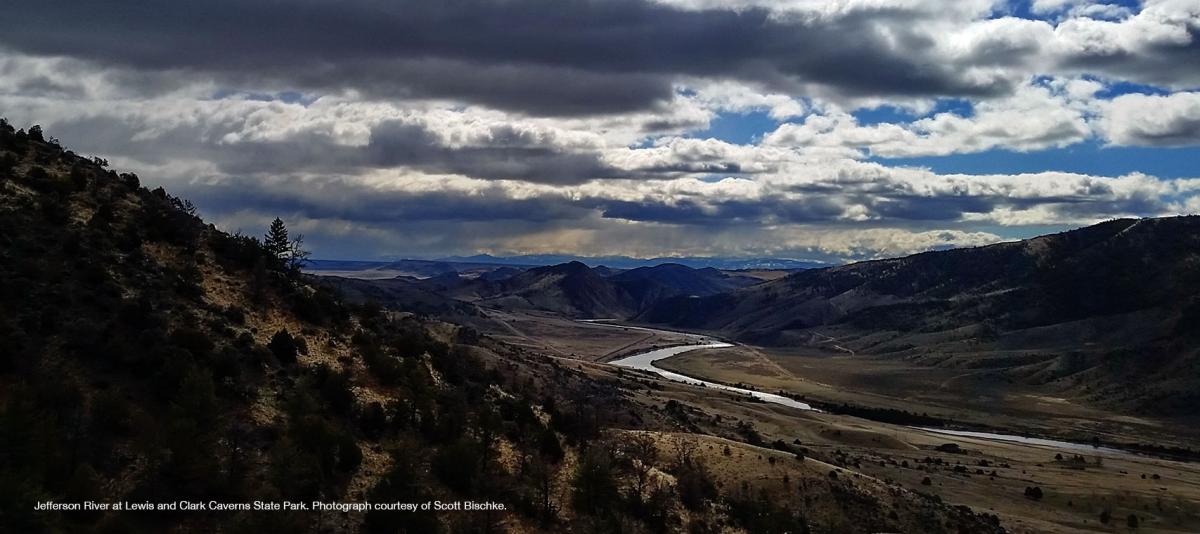
TABLE OF CONTENTS
Title Page
Executive Summary
WHAT IS THE MONTANA CLIMATE ASSESSMENT?
Climate basics
Montana’s unique features
Our analysis
Major findings
Water in Montana
Our analysis
Major findings
Forests in Montana
Our analysis
Major findings
IMPACTS TO MONTANA’S AGRICULTURE
Agriculture in Montana
Our analysis
Major findings
Acknowledgments
List of Acronyms
Foreword
01. Introduction to the Montana Climate Assessment
Cathy Whitlock
LITERATURE CITED
Nick Silverman, Kelsey Jencso, Paul Herendeen, Alisa Royem, Mike Sweet, and Colin Brust
NATURAL AND HUMAN CAUSES OF CLIMATE CHANGE
Geography and topography
Climate divisions
Current climate conditions 1981-2010
Teleconnections
Global Climate Modeling
Temperature projections
Precipitation projections
03. Water and Climate Change in Montana
Wyatt F. Cross, John LaFave, Alex Leone, Whitney Lonsdale, Alisa Royem, Tom Patton, and Stephanie McGinnis
Climate change and the water cycle
Montana water resources
Geographic and temporal setting
Future projections
Chapter organization
Measuring snowpack
Montana’s diverse geography and topography influence patterns of snowpack accumulation and snowmelt
Long-term variation in snowpack and the importance of ocean-atmosphere linkages
Observed regional trends in snowpack
Observed trends in Montana’s snowpack
Montana’s snowpack is particularly sensitive to warming
Snowpack projections for Montana
Observed regional trends in snowmelt and runoff timing
Factors that influence snowmelt and the timing of runoff
Model projections for snowmelt and runoff timing
Observed trends in total annual streamflow
Factors that influence total annual streamflow
Annual streamflow projections
Madison Limestone—an aquifer sensitive to changes in climate
Irrigation-supported alluvial aquifers will likely be resilient to climate change
Fox Hills–Hell Creek aquifer, impacted by user withdrawals
Persistent drought
Regional and local factors that influence persistent drought
Drought and the dominant role of sea-surface temperatures
Likelihood of persistent drought
Warm-season drought
Observed trends in warm-season drought
Factors associated with low summer flows in Montana
04. Forests and Climate Change in Montana
Alisa A. Wade, Ashley P. Ballantyne, Andrew J. Larson, and W. Matt Jolly
Forest ownership, communities, and distribution in Montana
Potential climate impacts to forests
A note on species-level effects
DIRECT EFFECTS OF CLIMATE CHANGE ON FORESTS
Establishment and regeneration
Growth and productivity
Mortality and die-off
Species range shifts and forest distribution
INDIRECT EFFECTS OF CLIMATE CHANGE ON FORESTS
Disturbance resulting from fire
Disturbance resulting from pathogens and insects
Soil responses, nutrient cycling, and carbon storage
ADAPTATION STRATEGIES FOR A CHANGING CLIMATE
05. Agriculture and Climate Change in Montana
Bruce Maxwell, Becky Weed, Laura Ippolito, Anton Bekkerman, Madison Boone, Megan Mills-Novoa, David Weaver, Mary Burrows, and Laura Burkle
SUMMARY OF KEY CLIMATE PROJECTIONS FOR MONTANA AGRICULTURE
CLIMATE CHANGE EFFECTS ON COMMODITY CROPS IN MONTANA
Shifting ratios of spring and winter wheat
Increased corn production
Price volatility and the cost of uncertainty in commodity markets
Pulse crops
Irrigation demand and supply
Other large-scale production crops: sugar beets, potatoes, and organic grains
CLIMATE CHANGE EFFECTS ON LIVESTOCK
Forage and feed
Forage quantity and species distribution
Empirical data on forage quality
Implications for resilience
Heat stress
CLIMATE CHANGE EFFECTS ON POLLINATORS, DISEASE, PESTS, AND WEEDS
Pollinators
Crop diseases
Insect pests
Infectious disease in animals
Weeds and invasive plants
THE FUTURE OF MONTANA AGRICULTURE
06. KEY KNOWLEDGE GAPS Addressing Climate Change in Montana
Cathy Whitlock, Wyatt F. Cross, Bruce Maxwell, Nick Silverman,
and Alisa A. Wade
